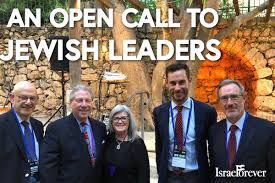For a while I've dabbled with the Hartman Institute's publicly available programs. This organization is based in Israel, founded by a visionary named David Hartman z"l and continued by his son. It has grown, along with other Jewish educational enterprises such as Mechon Hadar in NY or the 92nd Street Y in NY. Materials are written and audiovisual, largely available on a computer, and mostly free. Subscribers number in the thousands. Presenters have upgraded people's minds in unique ways. It reflects perhaps the biggest success of organized Judaism in my adult lifetime. There are also variants. The Mesorah Heritage Foundation publishes translated Jewish texts under the Artscroll label along with an array of books from biographies to Kosher cookbooks. Sefaria has compiled massive amounts of texts which it presents to anyone with internet access. Aish HaTorah has ventured into engaging people into Jewish culture through the internet. All these efforts require professionals of various types. Scholars, tech experts, fundraisers. All have risen to the challenge.
In its Sources Journal, the Hartman Institute dedicated its most recent issue to leadership. The magazine, available for free online, invited several Rabbis to comment on their experience and models for running thriving Jewish agencies. All probably accurate. Where it fell short, I think, is describing what is really a bubble populated by upper-tier talent. Like many others, I partake of what they offer. But I've functioned far outside that restricted inner circle. My interactions bring me into contact with lay volunteers, local Rabbis, agencies run as fiefdoms, often with a leadership that expresses more entitlement than accountability. And often with Leadership Generated Attrition instead of growth.
One advantage of reaching three-score and ten is that others
of my generation know how our adult Jewish lifetimes turned out. Few of us held
public positions. Most of us dealt with
people of title, a very mixed experience on the receiving end. Perhaps it started with Hebrew School where
obedience will get a kid on the Honor Roll more than intellect would. As a youngster of the Eisenhower-Kennedy era, the elders of synagogue and
community organizations appeared to be men, with pockets like Sisterhood or Hadasssah reserved for women, who developed businesses or maybe earned
a university title or rabbi, or for the ladies, married well. My parents and my generations were no longer dominated by the builders, those bonayich of the prayer
before Aleynu, but their proteges, the bawnayich. They too often functioned as managers, the
inheritors who value expediency. They were not the creators. The legacy agencies that we have now started in the World War I era, not very different from the Scouts, NAACP, or labor unions that trace their origins to those years. I found officials who operate more as gatekeepers, leaders
who stratify who can serve on a committee and whose place is to stuff
envelopes. Likely alumni of the USY
Cliques of the 1960s, my formative years, who succeeded by keeping discord at arm's length, though
at a high price when amiable excludes prickly talent or shy teens, maybe even some experiencing depression or loneliness. We nurtured leaders who get Aliyot on Rosh
Hashanah, hug each other but rarely shook my peasant hand as their 30-ish Torah
reader.
Twenty-first century Judaism has had its glories. People studying Torah as resources expanded,
a mostly vibrant Israel, Hechsher expansion.
It has also had its failures, the attrition of synagogue membership,
waning market demand for Kosher butchers, and as Shira Telushkin outlined in
her The Atlantic essay, the inability of traditional youth pipelines, Ramah, USY, Hillel, to
supply our flagship seminaries with students.
https://www.theatlantic.com/ideas/archive/2024/02/american-rabbi-shortage-synagogues-denominations/677423/ At the local level, I have seen my share of leadership misconduct. A Rabbinical non-renewal by three machers pooling their resources to buy out the contract privately to bypass a
congregational discussion. I have given
money to Swarthmore Hillel when Hillel International blackballed them. One leadership essay in that issue of The Source touched
on the dark side, which never quite gets ownership.
Like most retired professionals, we acquired competing models of leadership for comparison, whether my medical experience or those retired from universities and corporations. I think in my medical sphere, leaders conveyed appreciation with obligations to patients and doctors. My Jewish leaders, at synagogue and Federation, seemed more entitled to the positions they held. Fellow docs sought my talent or consensus. Fellow Jews sought my compliance or my funds. In late life, people can tell the difference. Mid-life thriving people authored the two essays. The series could have benefited from an essay by a senior leader who struggled to change relationships and bring a lagging agency back upwards or needed to extricate himself from an unfavorable experience. That's not what the editor chose to present. It does not misrepresent the upper tier of Jewish leadership, but it very much skews that middle tier which serves as our interface with synagogues and agencies of worthy purpose.


No comments:
Post a Comment